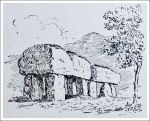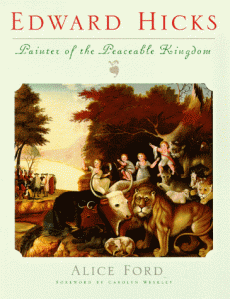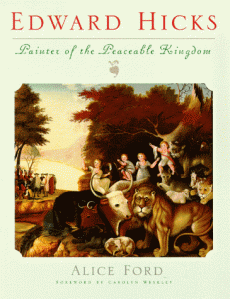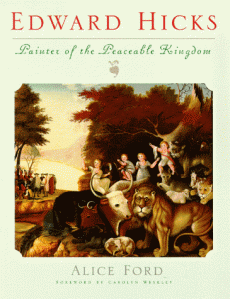Lenora Rogers's Blog, page 97
April 8, 2016
Emily Hill – Author
My guest today is friend and Author Emily Hill. Emily recently took a trip to Bavaria that I found very interesting. I asked her to share what she learned on this amazing trip. I think you will fin…
Source: Emily Hill – Author


April 7, 2016
Plas Newydd Burial Chamber, Llanfair P.G., Anglesey
 Cromlech at Plas Newydd, in Anglesey (Old Drawing)
Cromlech at Plas Newydd, in Anglesey (Old Drawing)
OS grid reference: SH 5198 6972. Plas Newyddprehistoric burial chamber, cromlech or dolmen, standsjust300 metresnorth-east ofthe shoreline of the Menai Straits – at the south-side of the island of Angle-sey and, just opposite Plas Newydd House and Country Park – in whose “private” grounds it is situated. The site is1 miles south-west of Llanfair P.G. village and Menai Bridge, which links the Welsh main-landto th...
“A Few Spoke Nothing But Gaelic”: In Search of the Irish Language in the American Civil War
 Irish in the American Civil War
Irish in the American Civil War
In Philadelphia on 13th February 1868, Owen Curren and Mary Curren gave an affidvait relating to the case of Farrigle Gallagher. Gallagher, a member of the 13th Pennsylvania Cavalry, had died a Prisoner of War at Andersonville. His wife Anne survived him by less than 6 months, dying– likely of T.B.– in December 1864. The Currens were giving evidence in 1868 in an effort to secure a pension on behalf of the Gallagher’s three minor children. However, the Pension...
Quaker Ideals in Edward Hicks’ Painting
 On the 4th of April 1780, American painter and minister Edward Hicks was born in Bucks County, Pennsylvania to Anglican parents, but was raised in the Quaker faith by one of his mother’s friends after she passed away when Hicks was still a baby. Trained as a coach painter, he later became a Quaker preacher. He tried his hand, albeit unsuccessfully, at farming to support his growing family, but found that he could cope better financiallyby painting.
On the 4th of April 1780, American painter and minister Edward Hicks was born in Bucks County, Pennsylvania to Anglican parents, but was raised in the Quaker faith by one of his mother’s friends after she passed away when Hicks was still a baby. Trained as a coach painter, he later became a Quaker preacher. He tried his hand, albeit unsuccessfully, at farming to support his growing family, but found that he could cope better financiallyby painting.
Quaker (Society of Friends) bel...
Quaker Ideals in Edward Hicks’ Painting
 On the 4th of April 1780, American painter and minister Edward Hicks was born in Bucks County, Pennsylvania to Anglican parents, but was raised in the Quaker faith by one of his mother’s friends after she passed away when Hicks was still a baby. Trained as a coach painter, he later became a Quaker preacher. He tried his hand, albeit unsuccessfully, at farming to support his growing family, but found that he could cope better financiallyby painting.
On the 4th of April 1780, American painter and minister Edward Hicks was born in Bucks County, Pennsylvania to Anglican parents, but was raised in the Quaker faith by one of his mother’s friends after she passed away when Hicks was still a baby. Trained as a coach painter, he later became a Quaker preacher. He tried his hand, albeit unsuccessfully, at farming to support his growing family, but found that he could cope better financiallyby painting.
Quaker (Society of Friends) bel...
Quaker Ideals in Edward Hicks’ Painting
 On the 4th of April 1780, American painter and minister Edward Hicks was born in Bucks County, Pennsylvania to Anglican parents, but was raised in the Quaker faith by one of his mother’s friends after she passed away when Hicks was still a baby. Trained as a coach painter, he later became a Quaker preacher. He tried his hand, albeit unsuccessfully, at farming to support his growing family, but found that he could cope better financiallyby painting.
On the 4th of April 1780, American painter and minister Edward Hicks was born in Bucks County, Pennsylvania to Anglican parents, but was raised in the Quaker faith by one of his mother’s friends after she passed away when Hicks was still a baby. Trained as a coach painter, he later became a Quaker preacher. He tried his hand, albeit unsuccessfully, at farming to support his growing family, but found that he could cope better financiallyby painting.
Quaker (Society of Friends) bel...
Campaign Letters of Sergeant Michael Conners, D Troop, 7th Cavalry
I cannot describe in language the battle
but bullets sang home sweet home around our ears,
but I always said that Indian bullets were not made to kill me.
During the course of the Pine Ridge campaign, Sergeant Michael Conners of Captain Godfrey’s D Troop wrote seven letters to a young seventeen-year-old woman, Lillie Carlyon, from Junction City, Kansas, the town adjacent to Fort Riley. Like the campaign letters of Sergeant John B. Turney and Private Thomas McGuire, Conne...
April 6, 2016
Why Me ~ My Journey with Job
This page is dedicated to the journey of writing my book about Job. The Book of Job is one of my most treasured passages and a piece that is forever showing me new and wonderful things. Yes, wonde…
Source: Why Me ~ My Journey with Job


April 5, 2016
Rum runners
On Tuesday April 12, 2016,7:30 PM–8:30 PM: Paul Valcour presents “Rum Running and Distilling,” a monthly Lecture sponsored by the Friends of the Ipswich Library. This event wi…
Source: Rum runners










